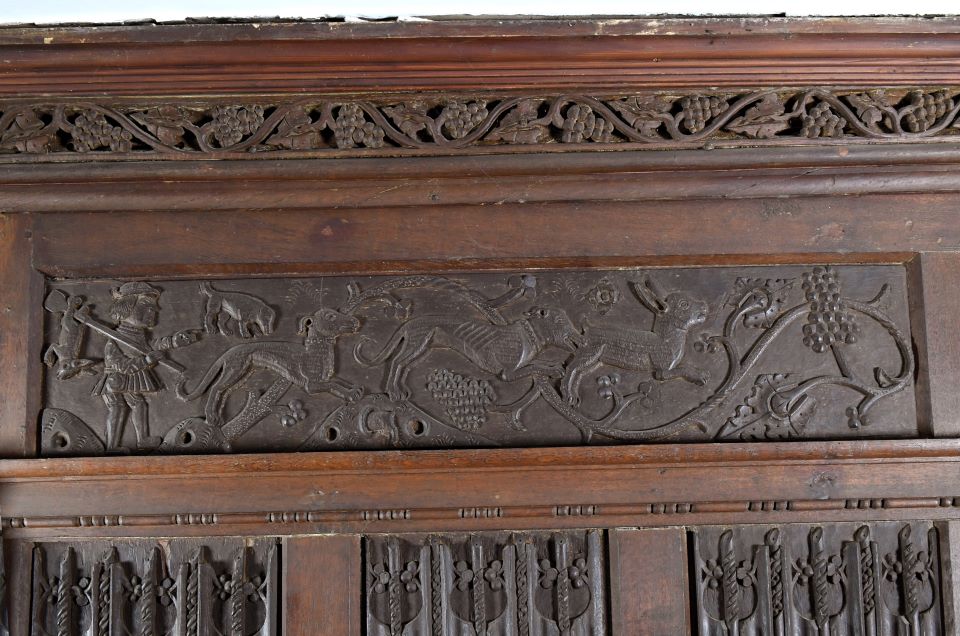The story of a Tudor manor house
A unique building

Abington Park Museum is housed in a much altered manor house dating to the 1500s, with a Grade I listing. It has a unique history having been used as a rural medieval farm manor house, country house, asylum and lately a museum. The building sits in what was Northampton’s first public park, opened in 1897, situated in a much loved and attractive suburb of Northampton.
We offer monthly prebooked tours of the building which are suitable for adults. We can also provide prebooked group visits
Book a group tour of the building
A medieval house
The house dates back over 500 years and the estate itself goes back further, recorded in the 1086 Domesday Survey. After passing through the hands of several families, it came into the ownership of the Barnard family in the early 1500s who owned and lived in the Manor for over 250 years.
The oldest parts of the house we can see today date from when the Barnard’s had it in their possession. These include the great hall and the oak room which date from 1530. Dendrochronology, a dating process using wood on the roof, has dated the building to between 1496 and 1508. The roof has been noted as one of the finest structures of its kind as many have been covered by later ceilings. To the east there would have been a service range probably with a buttery and pantry. The kitchens would have been apart from the main building and food was served through one of the doors in the north wall. To the west there would have been a two storey cross wing with private chamber for the family. The step is evidence of a raised dias or platform for the head table which was removed sometime after 1670.
A set of curiously carved panels
These panels date from between 1485 and 1508 and include scenes charting the labours of the months and allegorical tales. Other panels, including the vine carvings, were added after the move to fill in gaps. The carvings are some of the finest examples in the country, especially the linen fold design. Linen fold panelling is named after folded cloth. Many of these panels feature symbols that represent the families that owned Abington. The Bernards are often represented by a bear and the Lyllings by three pikes.
Audio tour of the oak room panels
A lost Shakespeare play
In 1642 John Barnard married Elizabeth Nash, the granddaughter of Shakespeare and his last surviving descendent. In the past speculation arose that, while she lived in Abington, Elizabeth hid away papers and unpublished plays and poems of the Bard, but nothing has ever come to light. The manor was sold on to the Thursby family in 1669, who pulled down the manor and rebuilt it on a larger scale employing the important architect Francis Smith of Warwick, but retained some of the original house in the planning. He demolished the protruding end of the cross wing and created a new, two storey, south front creating a drawing room and a breakfast room. It was further enlarged and remodelled between 1738-1743.
A modern asylum
In 1845, following its sale to London banker Lewis Lloyd, Abington Manor was let out and converted into an asylum by Dr Octavius Pritchard who employed his own forward thinking, sympathetic approach to treating his patients. The building was converted to create a series of bedrooms and day rooms. It remained as an asylum until 1892.
A museum for the borough
The Manor reverted to the ownership of Lewis Lloyd’s grand-daughter, Lady Wantage who donated it to the Borough of Northampton. In 1897 it was opened up to the public as a museum in commemoration of Queen Victoria’s Diamond Jubilee. Today the house and park are owned and managed by Northampton Borough Council. The house today is home to Abington Park Museum and the park is a popular attraction with local residents.
Virtual Tour
You may like to view our Abington Park Museum virtual tour.
